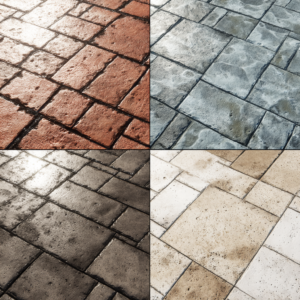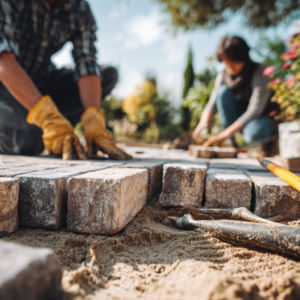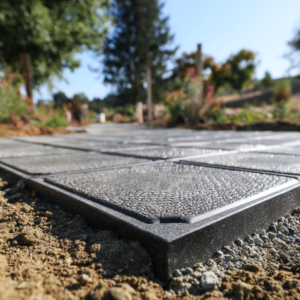Are you thinking about upgrading your porch or adding a stunning walkway this year? If so, cobblestones might just be the perfect solution. These timeless paving stones aren’t just practical – they’re a stylish way to enhance your outdoor spaces, from backyard paths to modern patio designs.
These products bring charm, texture, and durability to any landscape, making them a go-to choice for homeowners, architects, and designers alike all over the country. If you’re looking for something that combines aesthetics with functionality, keep reading to discover how to make cobblestone pavers (in every sense of the word) and why they are one of the best paving materials out there!
Read also: How to fix loose paver steps – your guide to repairing
Jump to:
First of all, what are cobblestones?
Cobblestones are small and (mostly) natural stones that have been used for centuries in paving roads, paths, and plazas. Today’s cobblestones, often made from granite, limestone, or sandstone, come in square or rectangular shapes with a natural, rustic finish that adds character to any space.
Originally a solution for rough dirt roads, cobblestones have evolved into a premium landscaping material. They’re available in a range of rich colors, like grey, earthy browns, deep black, and even multi-tonal shades, allowing you to match them with virtually any architectural style. Whether you’re designing a driveway, a charming garden edge, or a chic patio, cobblestones offer a unique combination of durability and sophistication.
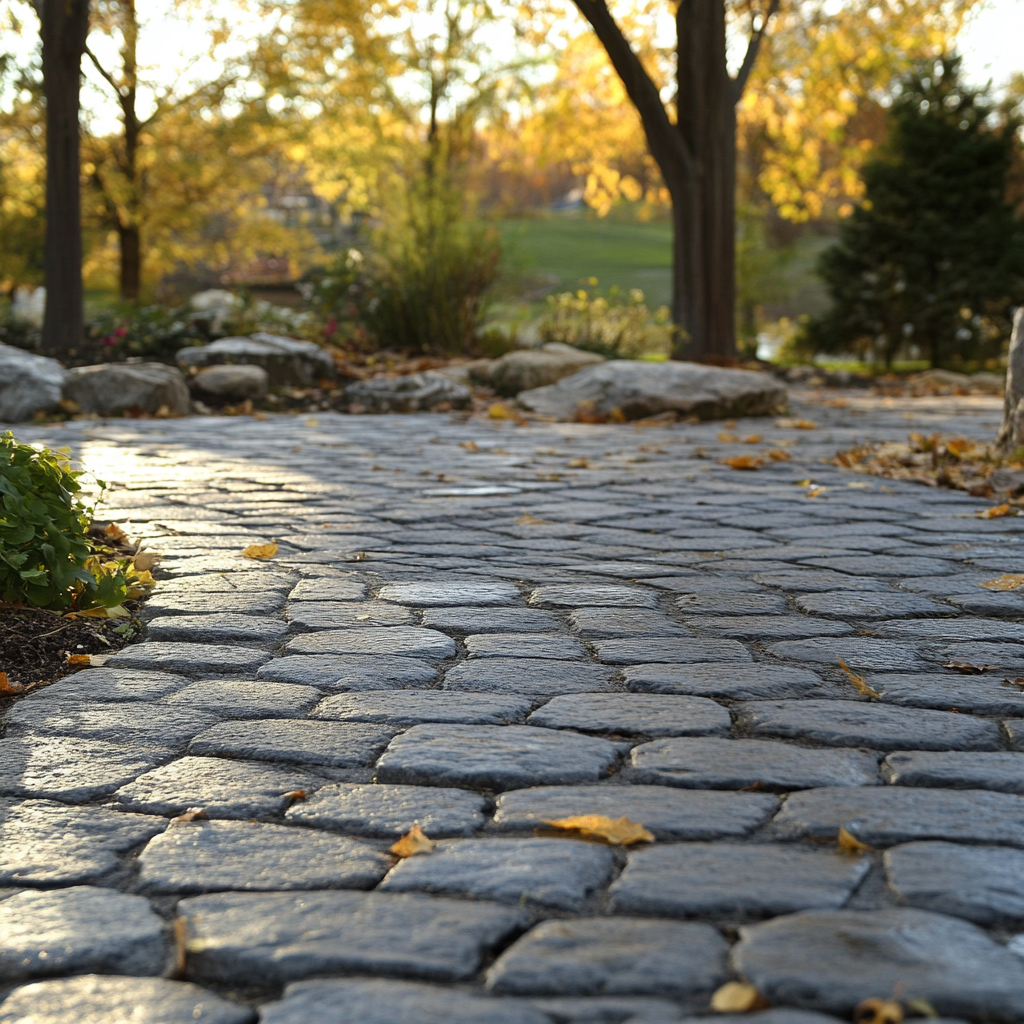
Homeowners tend to choose them for many reasons, such as:
1. Endless design possibilities
Cobblestones are incredibly versatile. They can create traditional pathways, rustic garden walkways, or even sleek, modern patio designs. Their textured surface and variety of colors make them ideal for adding depth and elegance to any outdoor area. Bonus? They age beautifully, which means they’ll continue to add value and curb appeal to your home over time.
2. Built to last
Durability is where cobblestones shine. Naturally dense and weather-resistant, they can handle heavy traffic, harsh weather, and even decades of wear and tear without losing their charm. Granite cobblestones, in particular, are so tough they can last over 100 years, making them a long-term investment for any property.
3. Low maintenance, high impact
Cobblestones are surprisingly low-maintenance. A simple wash here and there is enough to keep them looking fresh, and resealing every few years helps them maintain their vibrant color. This makes them an excellent choice for busy people who want beauty without the hassle.
4. Slip-resistant and safe
Thanks to their natural texture, cobblestones provide excellent grip, even on wet or sloped surfaces. This makes them a safe option for areas prone to heavy rain or for high-traffic zones like driveways and public walkways.
5. Cost-effective installation
Modern cobblestones often come pre-attached to a mesh backing, which significantly speeds up installation. This method not only saves time and labor but also ensures a uniform finish – which is perfect for large spaces like driveways and patios.
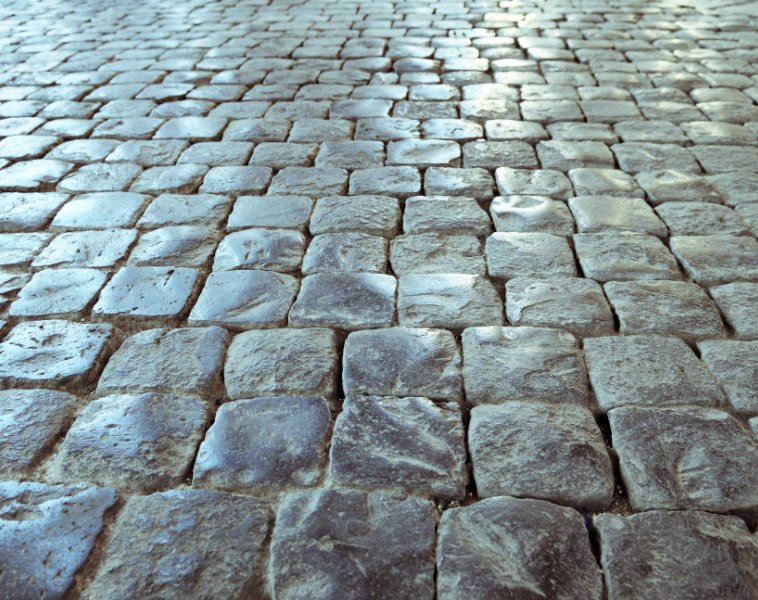
Types of cobblestones you can buy
Cobblestones come in two main forms on the market: loose pieces and mesh-backed tiles.
- Loose cobblestones: Ideal for small projects, loose cobblestones are laid piece by piece to create intricate designs. While they offer unmatched flexibility for custom layouts, the process is labor-intensive and best suited for smaller areas or detailed projects.
- Mesh-backed cobblestones: These are pre-arranged on a strong adhesive mesh, allowing you to lay multiple stones at once. This method is efficient, cost-effective, and perfect for larger spaces where speed and uniformity are key.
Now – how to make cobblestone pavers from scratch?
If you’re feeling creative and want to take a hands-on approach, making cobblestone pavers yourself can be a rewarding project – just be aware that it’s a time-consuming task that could be especially tiresome for beginners. Whether you’re going for a fully custom look or simply trying to save on costs, though, crafting your own cobblestones is entirely possible with the right tools and materials. Here’s what you’ll need:
- Concrete mix or mortar;
- Molds (you can use silicone molds, wooden frames, or make molds from metal for a custom shape);
- A trowel;
- A large mixing container or wheelbarrow;
- Pigment dyes (optional, for coloring the stones);
- Release agent (to prevent sticking to the mold);
- A flat, level drying area.
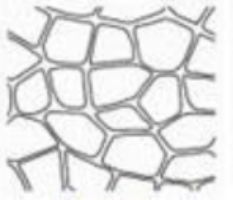
With everything in hands, follow our tutorial down below:
- You can buy molds online or make your own using wood or metal. For a more rustic look, irregularly shaped molds can mimic the natural feel of traditional cobblestones.
- In a large mixing container, combine your concrete mix with water, following the package instructions. If you want colored cobblestones, add pigment dye to the mix and stir well to achieve an even tone.
- Coat the inside of your molds with a release agent, such as cooking spray or specialized mold release oil. This ensures that your cobblestones pop out easily once they’re set.
- Use a trowel to fill the molds with the prepared concrete mix. Spread it evenly and tap the molds gently to release any air bubbles, which could weaken the stones.
- For a polished look, smooth the top with your trowel. Alternatively, leave the surface slightly rough for a more natural, hand-crafted appearance.
- Let the concrete cure in the mold for at least 24-48 hours, depending on the manufacturer’s instructions and local humidity levels. Place them in a shaded, level area to dry evenly.
- Once cured, gently remove the stones from the molds. Let them harden for another 5-7 days before using them for your project.
How to install cobblestone pavers
Now – installing cobblestones, on the other hand (especially with mesh backing), is a much simpler task, although it does require similar handwork. Here’s a quick guide:
- Dig out a base at least 6 inches deep, then add 4 inches of crushed stone or stone dust. Level it out with a compactor to create a stable foundation.
- Spread a layer of crushed and leveled sand, compacting it evenly.
- Position the mesh-backed cobblestones side by side, cutting pieces as needed for edges and tight spaces.
- Spread grout over the cobblestones, ensuring it fills all joints. Before it hardens, sweep away excess grout with a broom.
- Allow the grout to cure for 24 hours, and avoid driving on the surface for at least 72 hours.
- You’re done!
Creative applications for cobblestones to inspire you
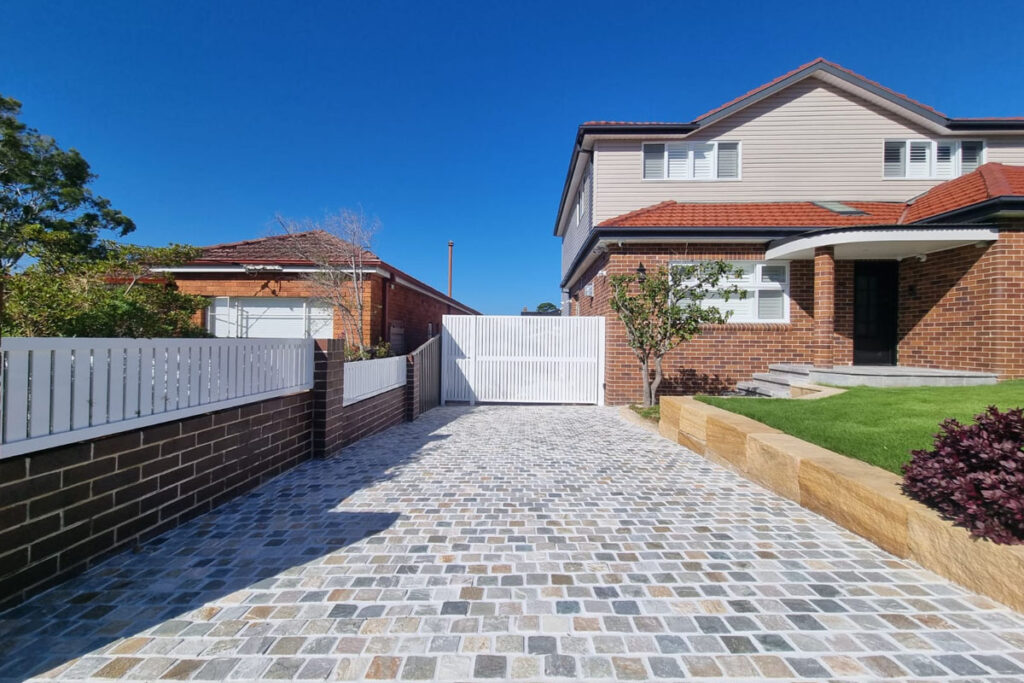
Let’s now take a look at some popular hardscape projects that can be made with any variation of cobblestone, handmade or not.
1. Patios
Cobblestones add texture and style to patios, creating a robust yet elegant outdoor space. Our tip? Try pairing them with other natural stones like travertine or limestone for a truly unique design.
2. Walkways
Transform garden paths, park walkways, or entryways with cobblestones for a rustic yet refined look. Their durability ensures they’ll handle foot traffic with ease while enhancing your property’s overall appeal.
3. Driveways
Cobblestones are the ultimate choice for driveways, offering a textured, slip-resistant surface that’s perfect for vehicles. Granite options like Raven Black or Sesame Grey bring both style and functionality to the forefront.
4. Garden edging
Use cobblestones to define garden borders or separate flower beds from your lawn. Not only do they add structure, but their sturdy build also makes mowing and maintenance a breeze.
5. Water features
Cobblestones are water-resistant, making them ideal for paving around fountains, ponds, or pools. Their natural textures and colors beautifully complement any water feature.
JS Brick can provide you with the perfect stone pavers for your project!
Now you know how to make cobblestone pavers.
In the end, these are more than just a paving material – they’re an investment in style, durability, and timeless charm. Whether you’re creating a pathway, driveway, or patio, their versatility and longevity make them a standout choice.
And here’s the best part: if you live in Florida or any surrounding counties, our team of hardscape contractors can help you with anything activity related to the supply, installation, and maintenance of your project. All you have to do is to contact us for a free estimate on our services and we’ll start putting our 24 years of experience at your service!

Remember: professionally made cobblestones are manufactured to be durable, uniform, and ready to install, saving you time and effort. Plus, you get access to a wide variety of shapes, sizes, and colors that might be challenging to replicate at home. For large-scale projects like driveways or walkways, purchasing cobblestones is undoubtedly the more practical and efficient choice.
